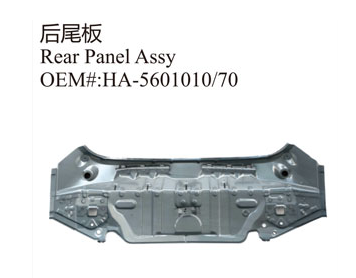Brake failure includes excessive brake pedal travel, slow brake action, low or even lost brake efficiency, and increased brake distance. There are three ways to eliminate the faults of auto parts:
(1) press the brake pedal continuously. If the pedal gradually rises and feels elastic, but it is still very low when pressing the pedal after a pause, it means that there is air in the brake system. At this time, exhaust the brake system.
(2) one foot brake is not effective, but the brake effect is very good when the pedal is pressed several times continuously, generally the free travel of the brake pedal is too large or the brake clearance is too large. Adjust the free travel of the pedal, then check the brake clearance, and disassemble and repair the brake if necessary.

(3) when the brake pedal is pressed, it is not weak or unsinkable, but the braking effect is poor. This phenomenon is the wheel brake failure, such as the brake shoe has oil or poor contact, the friction plate is aging, worn and the brake drum is uneven. The technical condition of braking shall be checked, adjusted and repaired if necessary.
The steering wheel of the vehicle is not correct, because the front wheel assembly is successfully balanced and damaged due to tire pad repair or vehicle repair, the transmission shaft assembly has loose parts, the dynamic balance of the transmission shaft assembly is damaged, the vibration damper is invalid, the rigidity of the leaf spring is inconsistent, the steering system parts are worn and loose, the front wheel is improperly calibrated, that is to say, the rubber stop fixed in the steering gear groove has been completely damaged As a result, this is often caused by the "swing head" of the front wheel during driving. As long as the new limit block is installed again, the fault can completely disappear.
Whether it is high-grade car, low-grade car, imported car, domestic car, new car or old car, there are different degrees of noise problems. The noise in the car mainly comes from five aspects: engine noise, wind noise, body resonance, suspension noise and tire noise. During vehicle driving, the engine runs at high speed, and its noise is introduced into the vehicle through firewall, chassis, etc. the body resonance caused by the vehicle driving on bumpy road, or the resonance caused by the window opened during high-speed driving, will become noise. Due to the narrow space in the vehicle, the noise can not be effectively absorbed, and sometimes it will resonate in the vehicle when they collide with each other.
During driving, the noise generated by the suspension system of the car and the tire will be introduced into the car through the chassis. The noise generated by different suspension methods, different tire brands, different tire patterns and different tire pressures will also be different. The noise generated by different body shapes and driving speeds will also be different. In general, the higher the driving speed, the greater the wind noise. According to the used car assessment service (WeChat public number escpgb), the car's noise will also increase with the increase of the year, but as long as the noise is not obvious, the problem is not very big. Don't worry too much.
Copyright By © Jiangsu Halreal Vehicle Industry Co., Ltd. Powered by Yicheng Network